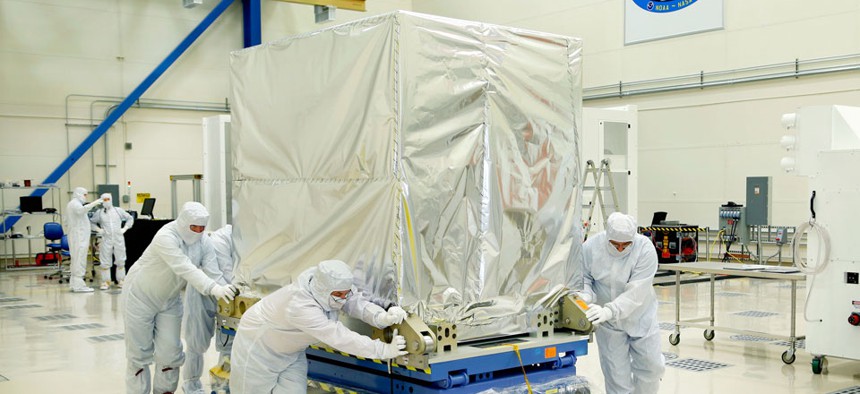NOAA Taps New Head for Satellite Programs

NOAA's GOES-R Advanced Baseline Imager (ABI) instrument arrives at Lockheed Martin’s Littleton, Colorado facility. NOAA
Chief among new NOAA satellite guru’s priorities will be overseeing two new programs worth a collective $20 billion
The National Oceanic and Atmospheric Administration has tapped one of NASA’s top spaceflight officials to lead the division responsible for overseeing billions of dollars’ worth of environmental satellites.
NOAA tapped Stephen Volz to be the new head of the National Environmental Satellite, Data, and Information Services, filling a position left open when former head Mary Kicza retired from public service earlier this year.
Volz will formerly assume his new role Nov. 2, and chief among his duties will be overseeing two new satellite programs worth a collective $20 billion.
NOAA believed Volz’ experience at NASA, where he managed the agency’s Earth science flight missions and a budget of some $1 billion annually, made him a prime candidate for the role overseeing the agency’s NESDIS division.
“Our space operation supports critical national needs and is undergoing significant changes both in orbit and on the ground,” said NOAA Administrator Kathryn Sullivan in a statement. “We were looking for someone that could bring outstanding executive leadership skills and technical expertise to NESDIS. Steve definitely fills that bill.”
Of utmost importance for Volz will be overseeing NOAA’s next-generation environmental satellites, the Joint Polar Satellite System – JPSS – and the Geostationary Operational Environmental Satellite R-Series – which goes by the acronym, GOES-R. They will produce an assortment of new information that will ultimately give weather forecasters and scientists more high-quality weather and climate data than ever before.
The first JPSS satellite is expected to launch in early 2017, about one year after the first GOES-R satellite is expected to become operational. While the development phase of the program now appears on pace, both GOES-R and JPSS have been criticized by government watchdogs.
Volz will also oversee other missions, including the Deep Space Climate Observatory, known as DSCOVR, and all NOAA’s current spacecraft fleet and NESDIS’ vast climate, oceanographic and geophysical data operations. This data is used throughout NOAA, across other federal agencies and all around the world for operational weather forecasts and climate impact assessments.
“This is an exciting time for the dedicated personnel at NESDIS,” Volz said in a statement. “The agency has an incredible mission and one that is going to become even more critical as the demand and need for environmental data increases.”



